22: Joining Stitches
to Rows or Rows to Stitches
(cont.)Purl side join
If the fabric is the purl side of stocking
stitch, use the same method as if you were joining on the knit side.
Again, match three stitches to three rows, then missing one row,
join the next three stitches to the next three rows [pic 6,7].
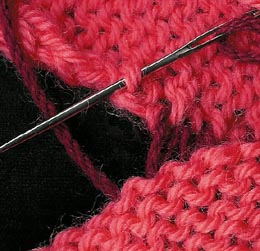
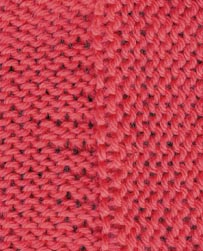
6: (left) Ignoring cast off row, work on purl side,
missing every fourth row on top piece.
7: (right) The finished seam.
---
If the piece to be joined to a row of
stitches has been knitted in a finer yarn using thinner needles,
maybe a sleeve or a feature panel, join one stitch to every row.
Adding knitting worked on a much larger needle with heavier yarn
will mean that you join one stitch to every two rows [pic 8, 9,10].
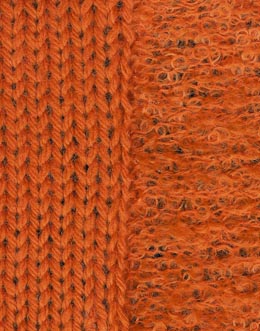
8: When joining rows to stitches with one piece knitted
with finer yarn and smaller needles, join one row to one stitch.
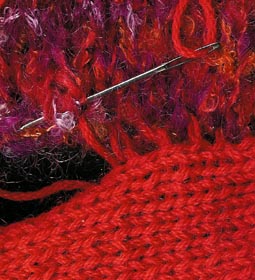
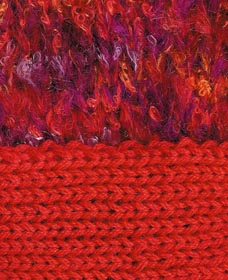
9: (left) Join a piece knitted with
larger needles and thicker yarn by matching one stitch to every
second row.
10: (right) The finished seam.
When using a pattern stitch, the ratio may
be different. Measure the number of stitches that equal a certain
number of rows, then evenly miss rows in the same ratio when joining
the seam. If five stitches equal six rows, miss every sixth row when
joining.
All these joining methods may not work exactly if you are following
a pattern, but the calculations that the pattern is based on should
be roughly the same ratio of three stitches matching to four rows.
NEXT CHAPTER >>
chapter page: 1 | 2 |